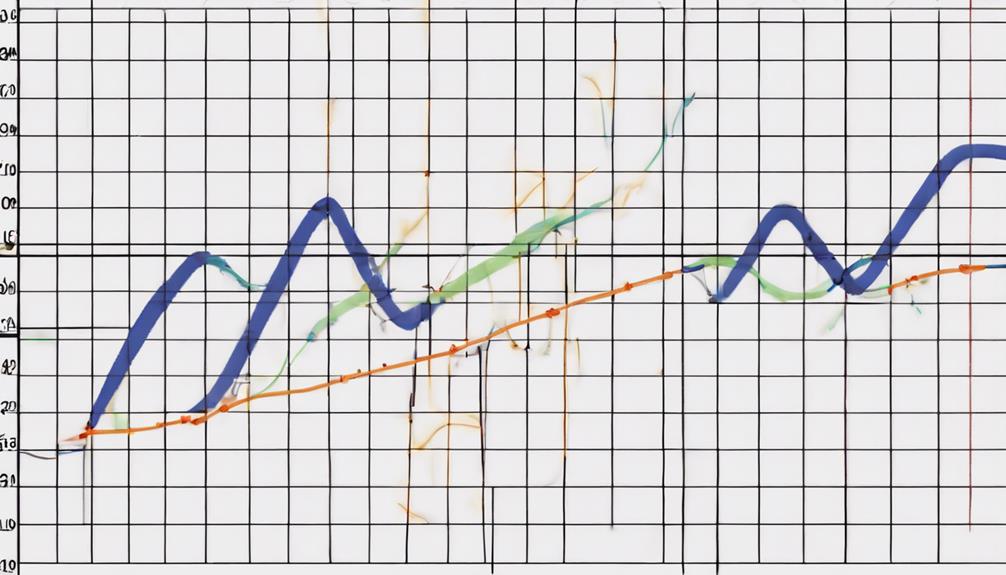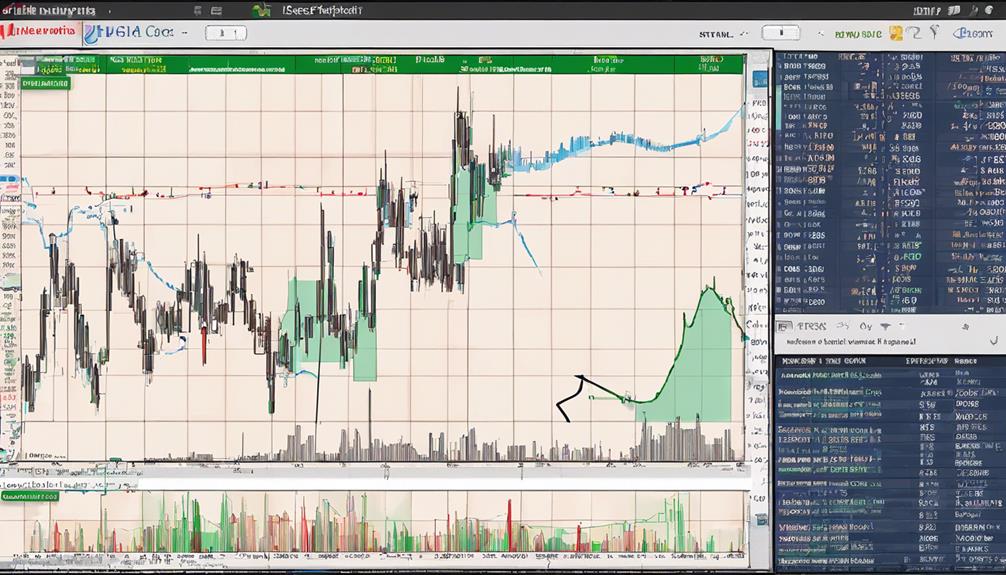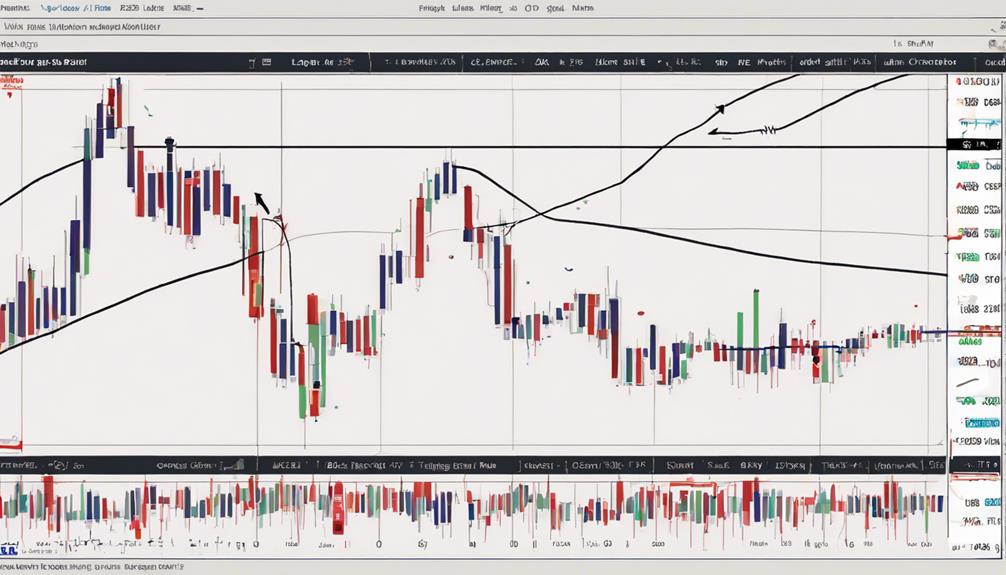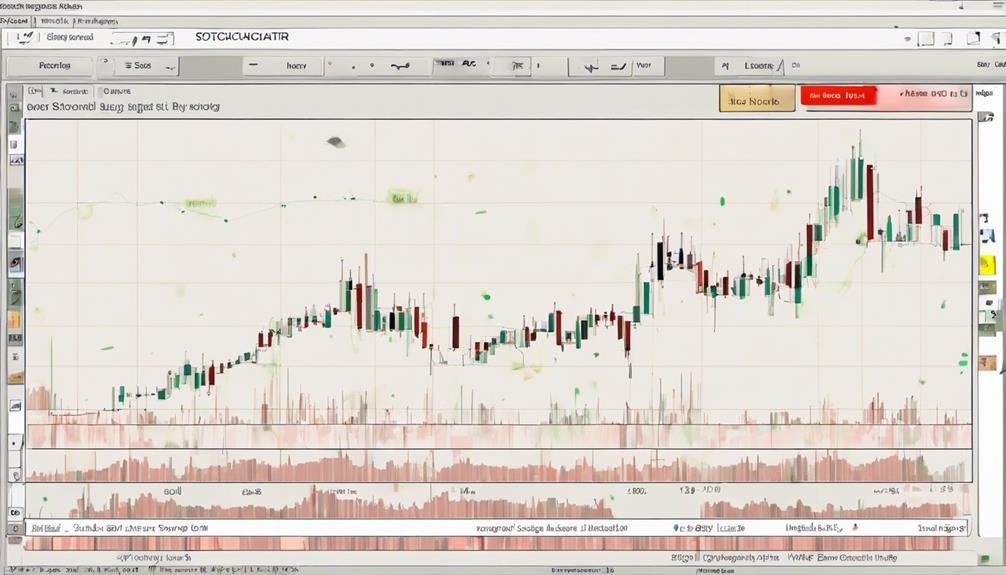When navigating the intricate landscape of technical analysis, you'll find the Stochastic Oscillator to be a beacon of insight amidst market fluctuations. Its uncanny ability to pinpoint potential reversals and highlight optimal entry and exit points is unparalleled.
However, beyond its surface-level functionality lies a deeper layer of significance that enhances your trading acumen. As you explore the intricacies of this essential tool, you'll uncover a world where probability meets precision, where randomness aligns with strategy.
This convergence of elements sets the stage for a comprehensive understanding of market dynamics and a heightened potential for profitable outcomes.
Importance of Stochastic Oscillator
The Stochastic Oscillator plays a crucial role in technical analysis by identifying market conditions of overbought and oversold. This indicator is instrumental in detecting potential trend reversals by analyzing momentum shifts.
In stock trading, forex, and various financial markets, the stochastic oscillator is widely embraced for its ability to generate valuable buy/sell signals. Traders rely on crossovers and divergence patterns highlighted by the oscillator to make informed decisions.
Stochastic Oscillator Calculation

Utilizing precise mathematical calculations, the Stochastic Oscillator provides traders with valuable insights into market momentum dynamics.
The calculation involves %K, which is computed as 100 times the difference between the closing price and the lowest low, divided by the highest high minus the lowest low.
%D, on the other hand, is typically a 3-day Simple Moving Average of %K, offering smoother readings for trend identification.
Understanding these formulas is essential for interpreting Stochastic Oscillator values accurately.
To streamline the process, traders can leverage Excel templates designed for calculating Stochastic Oscillator values efficiently.
This methodical approach ensures a clear interpretation of the stochastic oscillator's signals and aids in making informed trading decisions.
Stochastic Oscillator Vs Other Indicators

When comparing the Stochastic Oscillator with other indicators, it reveals unique insights into market momentum dynamics. Unlike some technical indicators that focus solely on price movements, the Stochastic Oscillator delves into momentum by comparing a financial instrument's closing price to its price range over a specific period.
This approach helps identify overbought and oversold conditions within a set range, offering valuable signals about potential trend reversals. By complementing other technical indicators, the Stochastic Oscillator contributes a distinct perspective on momentum shifts in the market.
Incorporating this indicator into your analysis can enhance your overall understanding of financial markets and improve decision-making processes in trading scenarios.
Stochastic Oscillator Interpretation

Comparing the Stochastic Oscillator with other indicators provides unique insights into market momentum dynamics, and interpreting the oscillator's readings is crucial for making informed trading decisions.
When interpreting the Stochastic Oscillator, consider the following key points:
- Overbought and Oversold Conditions: Identifying overbought readings (above 80) can signal potential sell opportunities, while oversold readings (below 20) may indicate buy signals.
- Trend Reversals: The Stochastic Oscillator helps in predicting potential trend reversals by analyzing historical price data and identifying shifts in market momentum.
- Extreme Market Conditions: Values above 80 and below 20 on the oscillator scale suggest extreme market conditions, highlighting potential entry or exit points for trades.
Understanding these interpretations is essential for effective trading decisions.
Implementing Stochastic Oscillator Strategies

To effectively implement stochastic oscillator strategies, traders focus on identifying key market conditions for making informed trade decisions. By recognizing overbought and oversold levels indicated by the oscillator, traders can pinpoint potential trade signals.
Utilizing stochastic oscillator crossovers aids in determining optimal entry and exit points within the market. Incorporating divergence patterns with the oscillator enables traders to anticipate potential trend reversals, enhancing forecasting abilities.
Moreover, combining stochastic oscillator strategies with other technical indicators offers comprehensive analysis and confirmation signals. Adjusting the settings of the stochastic oscillator according to the market conditions is crucial for improving the accuracy of trading decisions.
Why Is Understanding the Stochastic Oscillator Essential in Technical Analysis?
Understanding the stochastic oscillator in analysis is crucial because it helps traders identify overbought or oversold conditions in the market. By utilizing this technical tool, investors can make informed decisions about when to enter or exit trades, ultimately improving their chances of success in the market.
Frequently Asked Questions
What Is the Stochastic Oscillator in Technical Analysis?
The Stochastic Oscillator compares a security's closing price to its price range over a specific period. It helps identify overbought and oversold conditions, indicating potential reversals. Readings above 80 suggest overbought, below 20 oversold levels.
What Is the Importance of Oscillators in Technical Analysis?
In technical analysis, oscillators are vital for identifying market conditions like overbought or oversold. They offer insights into potential trend reversals through momentum analysis. Understanding these indicators improves decision-making for entry and exit points.
Which Indicator Is Better RSI or Stochastic?
When comparing RSI and Stochastic, consider the market conditions. RSI suits trending markets, while Stochastic is ideal for range-bound markets. Mastering both indicators enhances your analysis skills, leading to well-informed trading decisions. Choose wisely based on market dynamics.
Which Is Better Stochastic or Macd?
When comparing Stochastic oscillator and MACD, consider your trading style and time horizon. Stochastic excels in short-term reversals and price sensitivity, while MACD is favored for longer trends and crossovers. Choose based on your needs.
Conclusion
In conclusion, the Stochastic Oscillator is a vital tool in technical analysis, providing valuable insights into market conditions and potential trading opportunities. Its unique calculation method and ability to indicate overbought or oversold conditions make it a must-have for traders looking to make informed decisions.
So next time you're analyzing security prices, don't forget to consider the Stochastic Oscillator – it just might be the key to unlocking profitable trades.
